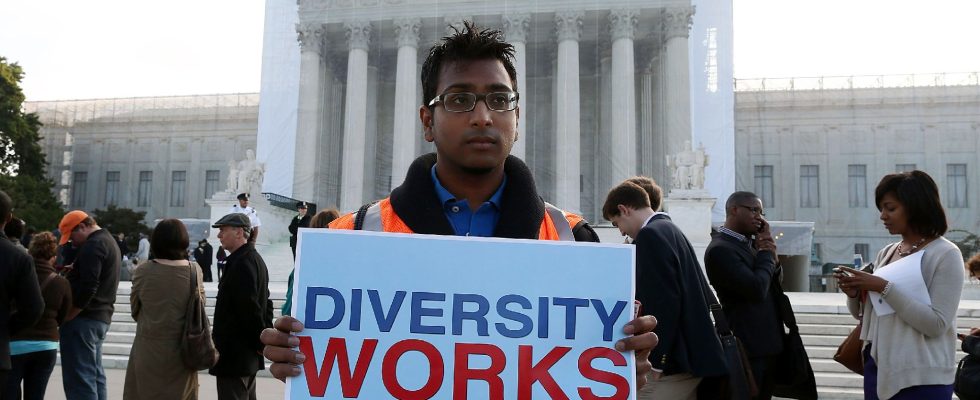The very conservative Supreme Court of the United States put an end, Thursday, June 29, to the programs of positive discrimination at the university, a new historic U-turn a year after its reversal on abortion.
Its six conservative magistrates judged, against the opinion of the three progressives, unconstitutional the procedures of admission on the campuses taking into account the color of the skin or the ethnic origin of the candidates. Many universities “have wrongly considered that the basis of a person’s identity is not their probation, the skills acquired or the lessons learned, but the color of their skin. Our story Constitution does not condone this,” Magistrate John Roberts wrote on behalf of the majority.
“In other words, the student should be treated on the basis of their individual experiences, but not on racial criteria,” he adds.
Racial and ethnic criteria
Several highly selective universities had introduced racial and ethnic criteria in their admissions procedure in the late 1960s to correct inequalities stemming from the segregationist past of the United States and to increase the share of black, Hispanic or Native American students in their numbers. These policies, known as “positive discrimination”, have always been highly criticized in conservative circles, who consider them opaque and see them as “reverse racism”.
Referred to on several occasions since 1978, the Supreme Court had prohibited quotas, but had always authorized universities to take into account, among other things, racial criteria. Until now, she considered “legitimate” the search for greater diversity on campuses, even if it means violating the principle of equality between all American citizens.
Thursday, the progressive magistrates were deeply moved by this volte-face. The Court “looks back on decades of jurisprudence and immense progress”, wrote, on their behalf, Judge Sonia Sotomayor. It “cements an artificial rule of indifference to skin color as a constitutional principle in a deeply segregated society, where the racial question has always mattered and will continue to matter”, she asserts again.
US President Joe Biden said he “strongly disagrees” with the Supreme Court’s decision, and called on academic institutions not to “let go” of their commitment to diversity.
Unsurprisingly, the Republican Speaker of the House of Representatives, Kevin McCarthy, for his part welcomed the decision of the Supreme Court, believing that it would restore “equality” between students. “Today is a great day for America,” former US President Donald Trump wrote on his Truth Social platform. “It’s the decision that everyone was waiting for and hoping for and the result is incredible (…). We are returning to (a system) entirely based on merit and that’s how it should be!” he added.
A long legal battle
This judgment finds its source in a complaint filed in 2014 against the oldest private and public universities in the United States, Harvard and that of North Carolina. At the head of an association called “Students for fair admission”, a neoconservative activist, Edward Blum, had accused them of discriminating against Asian students. The latter, who have academic results clearly above the average, would be more numerous on campus if their performance were the only selection criterion, he argued.
After having suffered several defeats in court, he turned to the Supreme Court which, ironically, has never been as diverse as it is today with two African-American judges and one Hispanic. But the high court has been profoundly overhauled by Donald Trump and now has six out of nine conservative magistrates, including African-American judge Clarence Thomas, a defender of the positive discrimination programs from which he nevertheless benefited to study at the prestigious Yale University.
The government of Democratic President Joe Biden had pleaded in vain for the status quo. “The future of our country depends on its ability to have leaders with varied profiles, capable of leading an increasingly diverse society,” said his representative.
In the same vein, large companies, including Apple, General Motors, Accenture or Starbucks, had pointed out that having “a diverse workforce improved their performance” and that they “depended on schools across the country to train their future employees. “.
